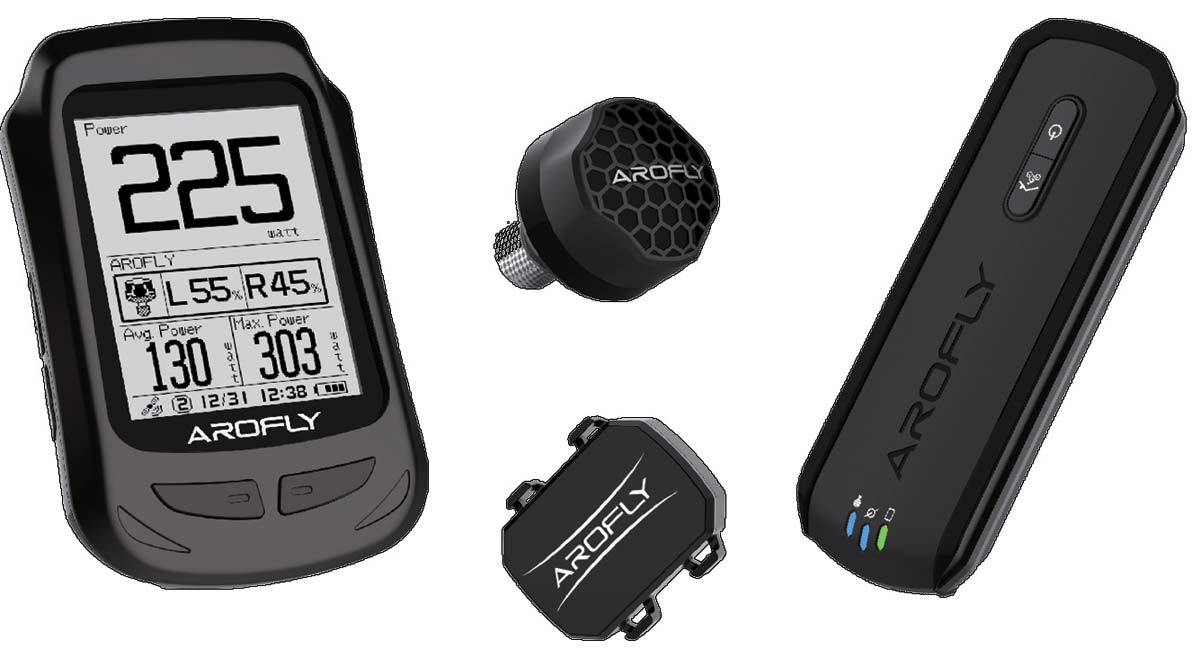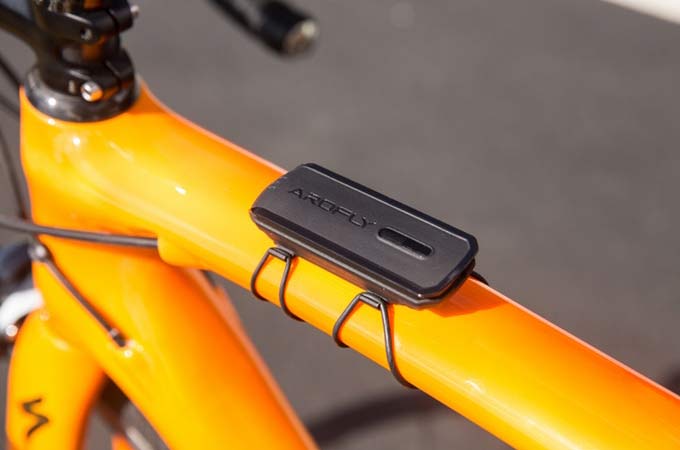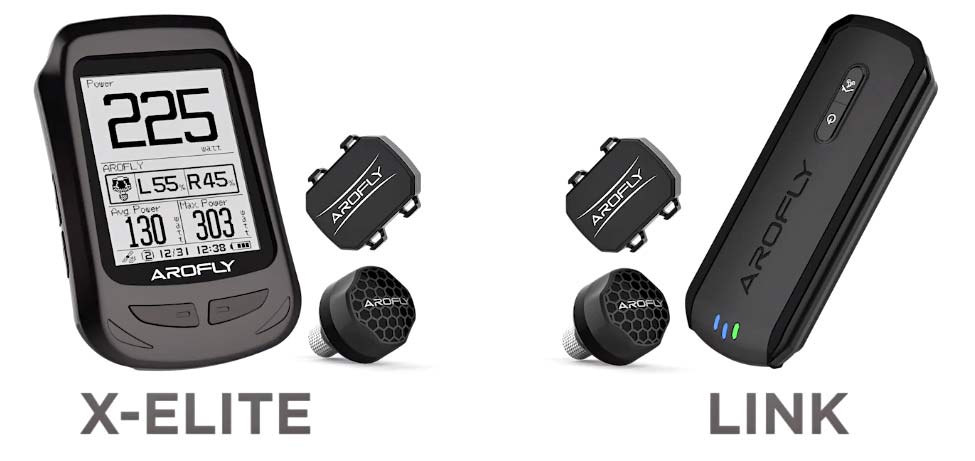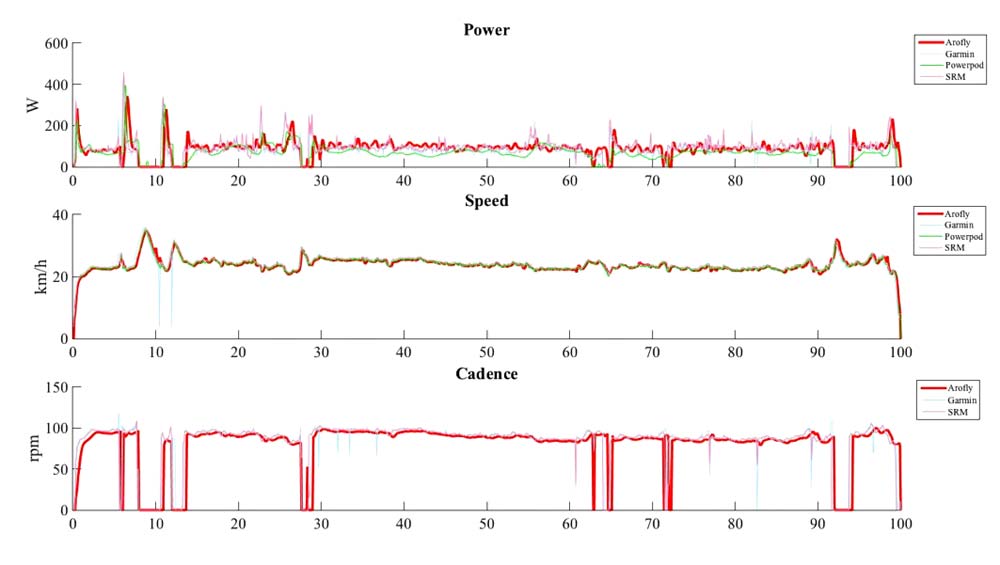We last caught up with the valve stem-based Arofly power meter last summer when an even more affordable version was teased that didn’t require the original mobile app interface or the later dedicated cycling computer. Now Arofly says they have made large improvements in accuracy & consistency, and are offering a system that will work with your current GPS cycling computer…
Arofly valve stem, tire pressure-based power meter
https://www.kickstarter.com/projects/1791716174/arofly-the-worlds-smartest-and-affordable-power-me
Unlike most power meters that measure the actual force being put into your bike’s drivetrain between the pedals and the rear hub, Arofly takes it one step further apparently measuring power where the rubber meets the road. The science behind its Dynamic Pressure Technology is vague enough that I’m not sure that it doesn’t go entirely over my head. But Arofly engineers claim that by analyzing real-time micro changes in tire pressure relative to road conditions, speed & cadence, their algorithms can accurately translate the collected data into power output.
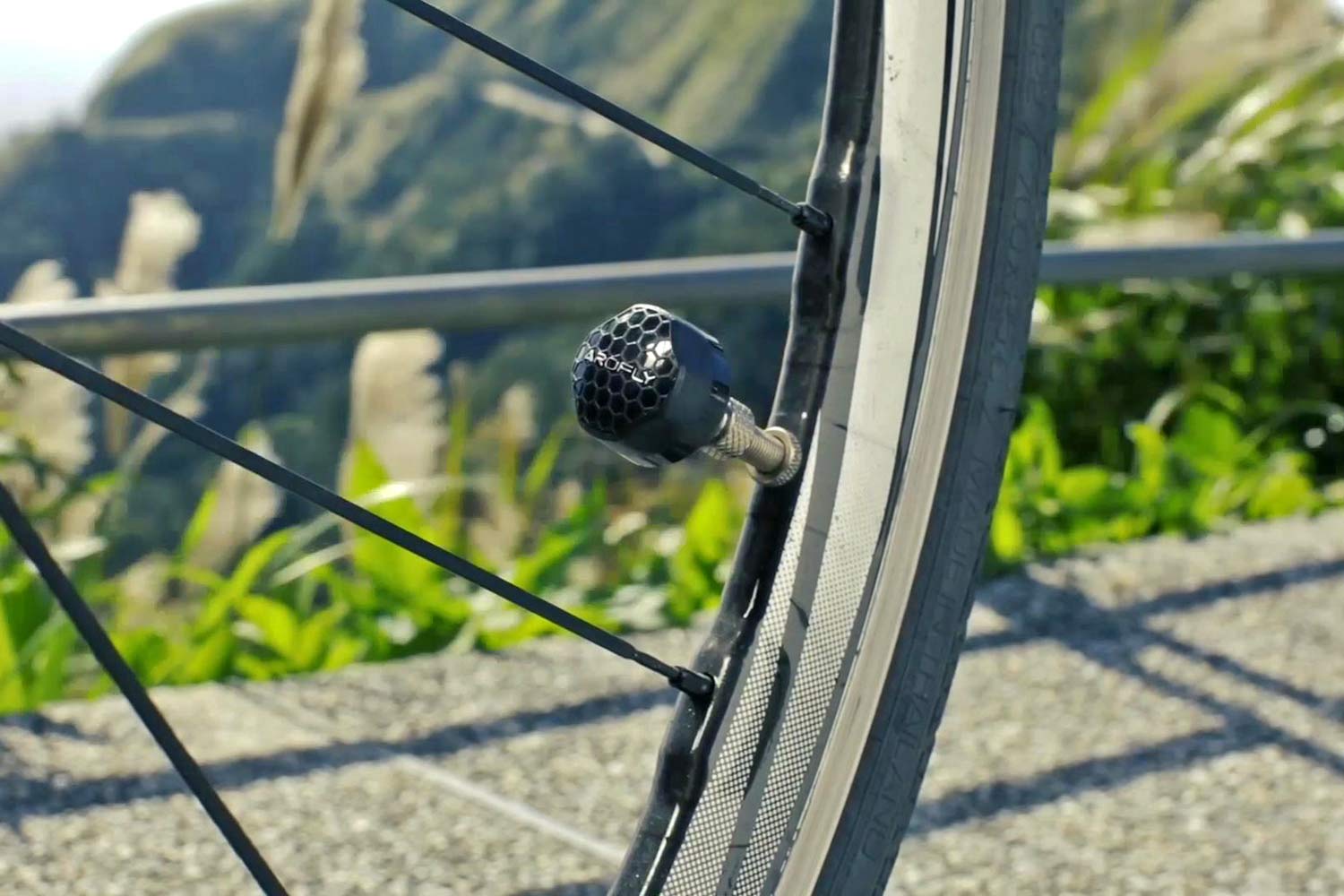
The end result is a low-cost power metering solution, that simply threads onto a Presta or Schrader valve stem, and together with a couple of other strap-on sensors can give be installed in seconds and easily swapped from bike to bike. We were previously told an external cadence sensor was not needed, but that has been revised in order to improve power accuracy, said to be on par with strain gauge based power meters.
Arofly’s 20mm diameter, 20mm long valve-based power sensor weighs just 7.2g including its CR1632 coin cell battery. The Cadence sensor adds another 10g with a CR2032 cell, plus 42g for the micro-USB rechargeable Link transmitter that puts all of the data stream communication together. When setup the Arofly outputs power, cadence & Left/Right power balance to the connected GPS. It also has the added bonus of rear tire pressure monitoring and can send a low pressure warning to their connected mobile app.
Now that the design and engineering is complete with the new Link transmitter offering cycling computer versatility, Arofly has taken to Kickstarter to gauge the final volume of interest and crowdfund their first production run.
Kickstarter Pricing & Availability
The original Arofly X-Elite system includes the core valve-based pressure sensor, a crank arm cadence sensor & Arofly’s own GPS cycling computer head unit is being offered to Kickstarter backers for $240 (down from an expected retail price of $350).
But the real budget power solution is the Arofly Link which gets the same valve sensor & cadence sensor, but throws in a Link transmitter that connects the pressure measurement to your existing GPS head unit via Bluetooth and/or ANT+. Kickstarter pledges from $170 get the Arofly Link setup, which will sell for $250 later this year.
Arofly is finalizing production molds now, with power meters slated to enter full-scale production next month. The crowdfunding campaign runs through May 25, with both X-Elite and Link systems expected to ship out to backers by the end of July 2019. While we’re not exactly clear how the pressure data is translated into reliable power, Arofly has shown comparable tracking to a couple of mainstream power meters on the market. They have been producing these devices commercially since 2017, refining them with each iteration. We would definitely be interested to see how they work in the real world.

